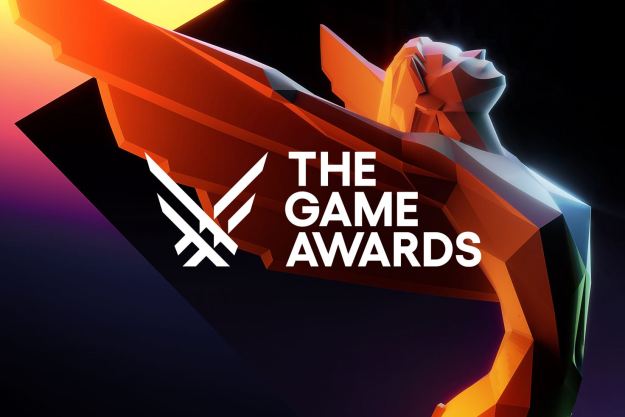With the reveal of Google Stadia, the upcoming Netflix for games, it’s only a matter of time before other companies reveal plans for a games streaming platform of their own. Following in the footsteps of music, TV, and movies, it’s a future for gaming that seems like a natural evolution.
Promising to bring high quality, instantaneous access to AAA titles “across all kinds of screens”, it’s a service that sounds almost too good to be true. But the reality is that it’s a move that could do incredible damage to indie games development.
“There are good ways and bad ways this can go. The bad way is the way that music went, with Spotify, the whole ‘you’ll make some money if enough people listen to your songs’,” Mike Rose, Founder of indie game publisher No More Robots, told me. “If you check how much revenue the music industry has been making over the last decade, you see this massive decline as streaming picks up.”

If what Mike says turns out to be true, revenue earned from game streaming would likely be per player and hours played, so studios would receive money every time someone boots up their game and then some more for each hour they spend playing. That might sound generous but given the minute payouts bands see from Spotify, it’s likely that earnings for studios will be tiny. Moreover, this model completely excludes indie devs with more niche projects that don’t offer 60 hours plus of play-time.
The alternative is the Netflix model, where the service gives studios a lump sum upfront for their game. This the way Microsoft and Sony are approaching the idea, and it’s healthier — but there’s still a lot of variables to consider that just aren’t good for smaller projects.
“If it’s money upfront for titles, is it going to be enough money? Is it going to make financial sense for developers to be on these platforms? This model relies on you getting enough money to make it worth it for you,” Mike explains. “If you don’t, then you don’t get any money from then on. Your game’s on that platform, people are playing it for free. The way people are perceiving the value of your game is entirely different.”

Affordable game streaming services come at a cost
Brand value is one of the things that creators are having to fight for more and more. Regular digital sales often mean a minority of players pay full price for a game, and these streaming services are coming on the back of monthly subscription boxes that deliver a selection of monthly game codes to subscribers every month. Currently, if someone is subscribed to every one of these, from PlayStation Plus to Humble Monthly Bundle, they are receiving around four dozen games a month, which can make purchasing the individual titles feel very frivolous.
“The obvious risk is depreciation of the brand, by giving for free a product that is sold with a normal price tag somewhere else,” Sébastien Bénard, Designer for Motion Twin Studio, says on placing a game in one of these subscription packages. “On the other side, it definitely allows to reach players that would have not even tried your game otherwise. So the benefits can be important.”

Motion Twin released Dead Cells after a year in Early Access in August 2018 to widespread acclaim. The game was a “last chance” project for them. After making mobile games for 18 years, they placed the fate of the studio on this passion project rogue-like, a gamble that, thankfully, paid off. But their path was made possible because of Early Access, which gave them the ability to sell an in-progress version of the game and build a community around its development. They would send out codes to particular streamers and content creators, and use them and their viewers as beta-testers.
“Something we learned along the way is that giving keys to relevant targets, such as smaller influencers and content creators, was pretty much always useful,” Sébastien said.
“It’s all about making your product visible by giving keys to people that probably wouldn’t have talked about your game, as it was under their radar.”
The influential power of streamers is something Google is mindful of, as Stadia has a feature that will potentially allow viewers to jump into a game they’re watching their favorite streamer play. But there’s a host of practicality concerns here, such as connection speed and lag, and more importantly, if it’s all running through Stadia, the developers aren’t going to see a meaningful kickback for the influx of players. It’s an environment that fundamentally alters the kinds of games studios think about making.
“Such a model would have a terrible impact on creativity and lead to massive changes in the way we make games,” Sébastien added. “Games-as-a-service would become even more important than it is today, as making sure you hook players would be a requirement.”
The fall of indies and the rise of live service games
No More Robots just put out Hypnospace Outlaw, a noir-ish detective story told entirely through an artistic rendering of nineties internet exploring. It’s a charming, strange game that appeals to anyone old enough to remember surfing the web pre-broadband, and one that it’d be hard to imagine finding a profitable niche in a world where it has to compete for pennies against AAA titles. But thanks to Discord and building a community from launch, it’s been possible to gradually gather the audience.
“At the announcement of a game we’ll tell people ‘Hey if you’re interested in this game, we’ve got a
Community building is one of the backbones of independent game development. Trust makes it easier to attract players and turn them into paying customers when something launches. As Christina Seelye, CEO of Maximum/Modus puts it, “A strong PC community and a good game is a powerful combination.”
Maximum and Modus are games publishers – Modus is a sub-label of Maximum that offers Maximum’s AAA standard infrastructure to indie games such as mech smash-’em-up Override and fantasy action-adventure Trine 4. Working across console and PC, many of Christina’s concerns about streaming are about control. Although the current markets can be difficult, studios can see the metrics and adjust their plans in a way these platforms don’t typically allow.
The popularization of streaming platforms will only further the development of live service titles like Destiny and Anthem
“When we put a game on a digital store, we can see exactly how many copies we sell, we can do price discounts, we have access to storefront marketing, and measuring success becomes more predictable,” She says. “With a subscription streaming service, there are still a lot of unknown variables: what does the payment model look like, what metrics will games be measured by, what data will we have access to?”
Both Christina and Sébastien do believe that an unfair model will alienate indie developers to stay away from the platforms. As with many things in the games industry, it looks like unionizing would help things, at least providing more leverage when negotiating how developers will be compensated. But that doesn’t address the idea that perhaps streaming platforms are just incompatible with how game development works.
“It increases the risk in a risky entertainment industry even more. You already invest heavily in creating products without any real idea how they’ll sell, but how long will the playtime be and revenue from that?,” Emma Maassen, President and Lead Developer at Kitsune Games, said. “There’s even less ways to predict that, creating massive risks of over-investment in products that don’t pan out.”
Emma believes the popularization of these platforms will only further the development of live service titles like Destiny and Anthem, whose primary goal is to keep players on board for hours on end. She cites the two-hour median playtime for Kitsune’s MidBoss is an example of how hourly revenue effectively demolishes the worth of swathes of titles, and their smaller audience means corporations probably aren’t going to see them being worth a massive lump sum for down-payment either. Without wanting to sound absolutist, she doesn’t see a way this model values indie developers unless some new, previously unconsidered way of operation is created.
Outside of games streaming services, the current market is starting to become better for studios. In the Epic Games store, studios get 88% of every sale, an improvement over Valve’s 70%. This new revenue split is slowly hacking away at the 80% choke-hold Valve has on the PC market, and it’s a precedent that will hopefully reverberate, making things better for creators and players alike.
Perhaps, it may even make Google Stadia and its competitors be more considerate. But we have a long way to go, and Emma is keen to remind everyone that only one platform really cares for independent teams. “If you care about indie developers itch is the best way to support them because developers can set their own revenue share percentage.”
“Itch.io is the only storefront truly looking out for small developers.”
Editors' Recommendations
- Helldivers 2 and Nightingale expose the issues all live service games face
- Xbox’s first stream of 2024 will include Bethesda’s Indiana Jones game
- 2023 gaming report card: how did PlayStation, Xbox, and Nintendo score?
- Staff picks: How Baldur’s Gate 3 beat the odds to become our 2023 Game of the Year
- Google loses landmark antitrust lawsuit against Epic Games






